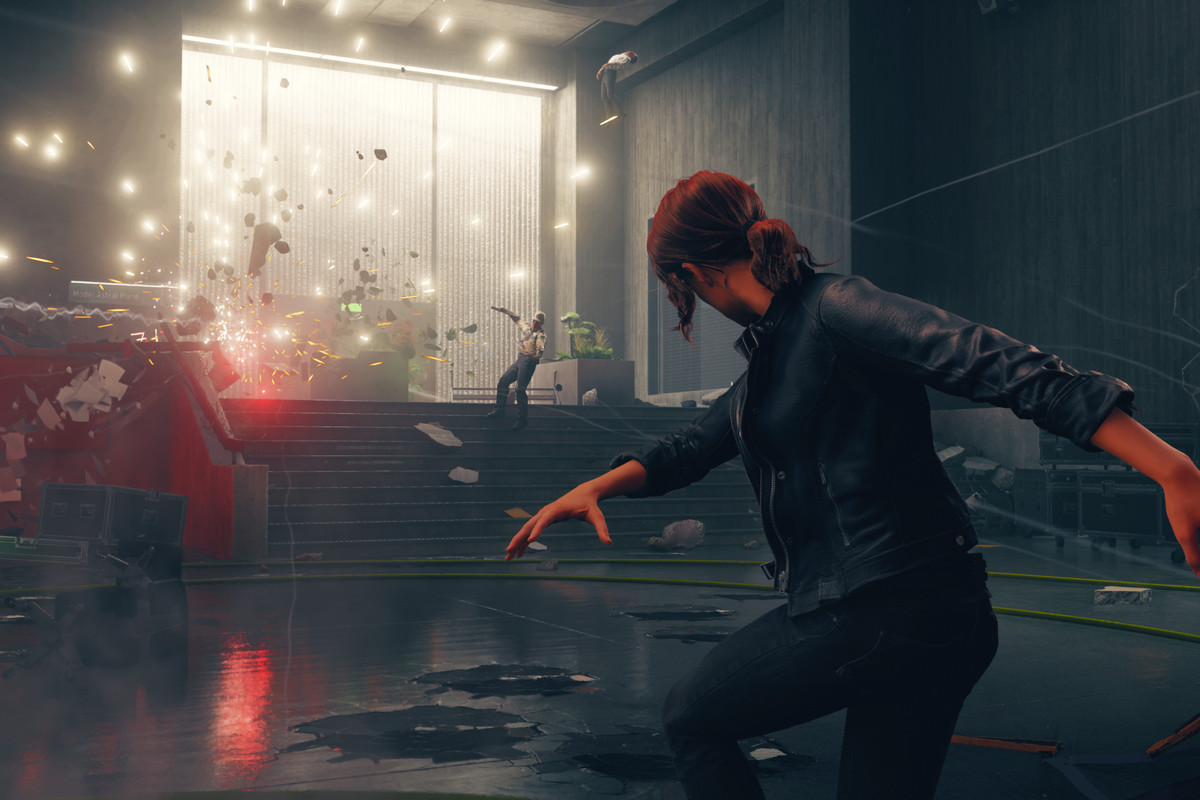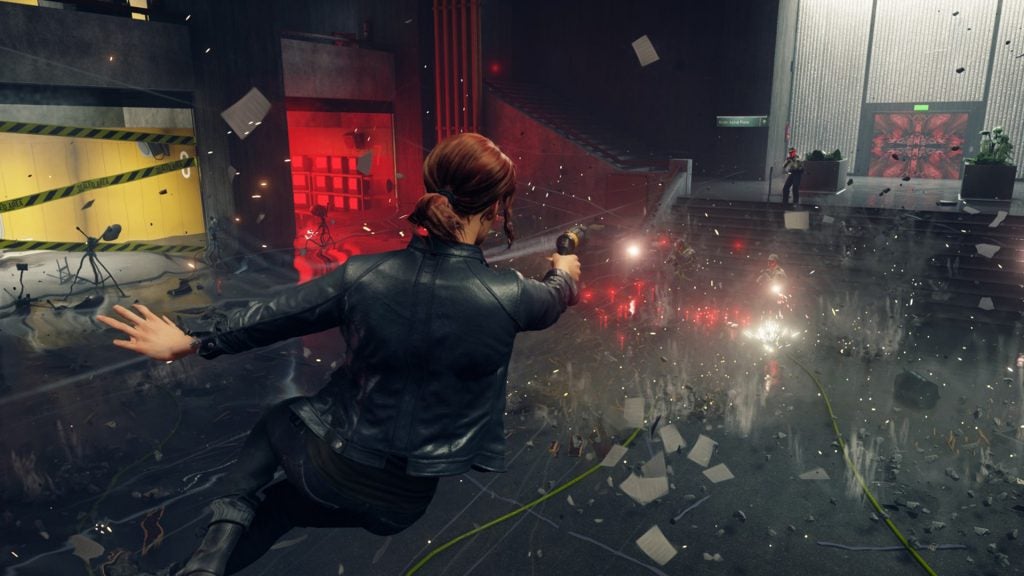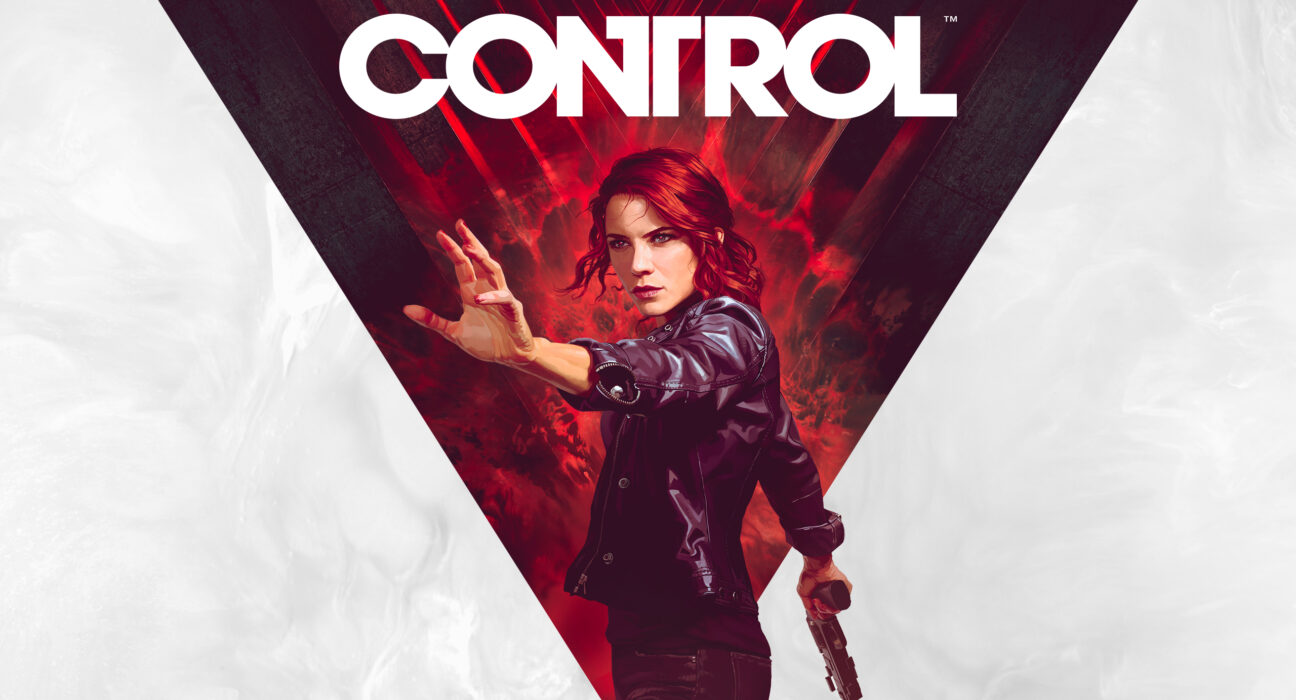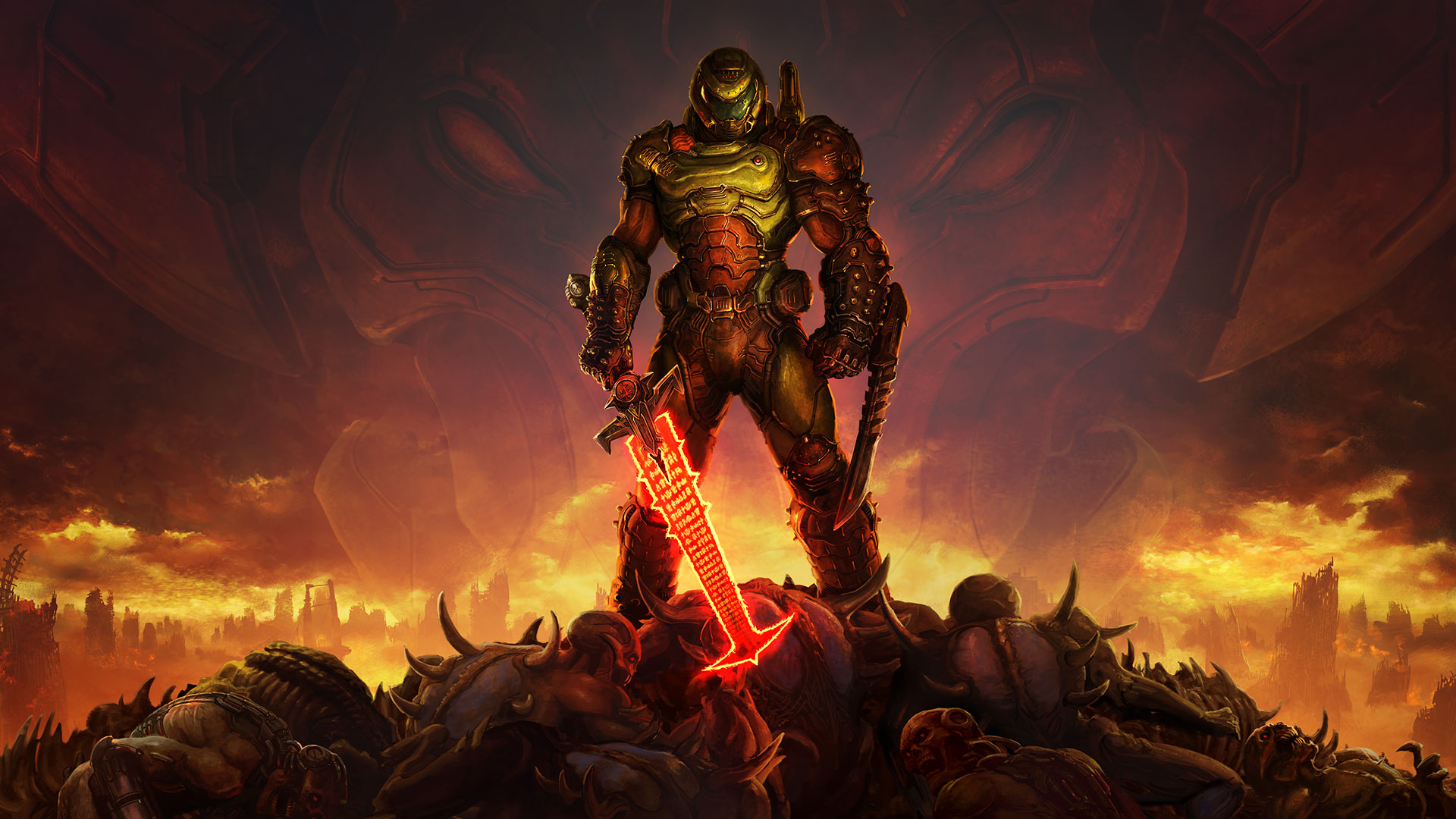This generation has seen a lot of really high-quality games. Smaller studios like Australia’s very own Team Cherry (Hollow Knight) and bigger teams like Santa Monica Studios (God of War) have shown the industry that quality can come from anywhere and everywhere, regardless of budget or IP. Perhaps one of the lesser appreciated studios is Remedy Entertainment, the team behind the cult-classic, Alan Wake. Their most recent project, Control, is one that kind of slipped through the cracks for me. While I was always interested in it, I’d never really gotten around to playing it until now and I’m regretting that. After going through the game, I can easily call it one of the most well-designed games of this generation and you really need to play it (if you haven’t already).
We’ll start with the story, one of the weaker parts of the game. Control puts the player in the shoes of Jesse Faden, a red-haired woman with supernatural abilities due to the presence of a silent, formless being named “Polaris” (same name as my favourite Australian band). Her brother, Dylan Faden, was taken by the Federal Bureau of Control [FBC] and she hasn’t seen or heard from him since. She’s come to the FBC headquarters (called The Oldest House) in search of her brother and stumbles across an organisation in shambles. A weird presence known as “The Hiss” has taken over a lot of the building and has completely altered the interior architecture.
In the Federal Bureau of Control, any employee who was not wearing a device known as the Hedron Resonance Amplifier [HRA] fell victim to The Hiss, who now use them as puppets. For its setting, Control is easily best-in-class. Not many games go for such a cryptic story, with a majority of the storytelling being done through internal monologuing within Jesse’s conscience. While a good portion of this dialogue can come off as a bit clunky and awkward, it overall exists as a great vessel for conveying Jesse’s character. She’s cautious, meticulous and focused; the perfect character for trying to figure out what exactly went wrong at the FBC.

Sourced from GamesRadar
As for the actual story itself, Control is rather different. It definitely feels like the story more or less serves as context for the gameplay. The events of the story never gel into a truly cohesive plot, but instead, do a great job of allowing the game to experiment with level and game design. It’s not that the story is particularly bad, but it takes the direction that a lot of psychological thrillers do, where they double down on weird and trippy themes and bring in strange plot points that all connect at the last minute. It’s definitely not the worst story I’ve played, not by a long shot, but it is also not the greatest. This doesn’t stop it from being enjoyable, as those who enjoy the psychological thriller subgenre will enjoy the style of presentation here. Hell, it’s what allowed me to enjoy it so much.
To aid in this presentation style, Control has a cast of characters ranging from level-headed bureaucrats to quirky, mysterious characters that speak almost in cryptic sentences. This is hammered home with one of the recurring characters, Ahti the Janitor. He is one of the first characters you meet in the game and it is made abundantly clear that he is distinct from everyone else. The writers have cleverly used his broken English to convey his creepy nature, speaking in almost weird, broken haiku, where you have to figure out what he’s trying to tell you. This character alone is one of the biggest highlights of Control’s writing.
If there is one thing that I do have to give the overall story writing for Control, it would be its pacing. A lot of games fall prey to the type of pacing that predictably wraps up side quests and plots as they approach the ending. You know you are getting near the end of a game when more and more loose ends are being tied, and this is largely due to how many writers will insert subplots and mini-stories that are loosely connected to the overall plot. Control is not like this. This game knows exactly what its plot is at all times and rarely deviates from it. Sure, there are small subplots that you may discover along the way, but they are almost always finished before you leave the associated area. Because of this, you don’t have that normal winding down of the plot that a lot of game stories do. Instead, you just have objectives that seem increasingly out of reach as you get close to them until it kind of just clicks. The ending is absolutely trippy and out there but, in a way, it makes total sense, thematically speaking. The ending is absolutely open-ended but I didn’t feel cheated or asking “was that it?” as I did with something like The Last of Us Part II or Destiny 2: Shadowkeep.
Now to move onto the gameplay, by far the strongest asset in Control’s library. This game takes the less is more approach for its gameplay on the outset. You are given a gun, the ability to crouch and sprint, and that’s it. However, as you progress through the game and explore the FBC’s headquarters, you encounter more strange and paranormal things which, in turn, grant you strange and paranormal abilities. Starting with telekinesis, Control constantly adds to the complexity of its gameplay through the abilities that you are given. In a similar fashion to a Metroidvania game, as well, there are constant reasons to retrace your steps into older areas and discover new things due to your newfound abilities. Anecdotally speaking, there was a case where I started a mission that required an ability which I didn’t currently have. Little things like this are a great way to organically emphasise the importance of these new abilities while still rewarding exploration and curiosity – the player knows where a secret is hidden but can’t access it. The only complaint I had with the gameplay has more to do with the early stages of the game, where the combat can feel clunky as Jesse doesn’t crouch back down into cover after standing up to fire; pseudo-cover-based mechanics like in the newer Tomb Raider games would help alleviate this, but this is pretty minor.

Sourced from Digital Trends
What works well with this gameplay is the exceptional level design featured in Control. The easiest way to game compare Control’s level design to is Dark Souls, with its sprawling corridors that lead to wildly different areas. Despite this, the level designers always managed to find ways to make these seemingly disconnected areas interconnect, whether it be through elevators or shortcuts. I was surprised to find myself constantly impressed with how connected Control’s game world really was. And there is no better example of how the level design and gameplay blend together to make thematically appropriate experiences than with the Ashtray Maze.
The Ashtray Maze is a section of the game that you won’t encounter until the later stages of Control’s core campaign. It has visual diarrhoea for wallpaper in its tight corridors and rooms, and it’s an ever-evolving maze. It changes around you, which is a pretty tried and true concept, but this isn’t what makes it so good, it’s how it does this that makes it so good. Little things make this experience so unique, like how the walls construct and deconstruct themselves in such a satisfying matter, how the level design for encounters within this area change, and the sections where the environment moves around you to create new paths. This is all without even mentioning Control’s implementation of mindbending and contortion to create fun encounters in this small section of the game. Enemies are spawned high and low, with varying degrees of threat, and there are so many potential approaches afforded to the player that it’s thoroughly enjoyable. Do you go super aerial and take out the enemies shooting rockets at you, or do stay grounded and try to keep out of their sight as you take down one of the bulkier enemies on the ground? There is so much variation that can be found in this small section alone and my enjoyment of the Ashtray Maze only increased as I progressed further.
As you move further and further through Control, killing numerous Hiss-afflicted people and completing side objectives, you gain ability points. These ability points can be spent to upgrade your health, energy (which you need for using a majority of your supernatural abilities), ability strength and even to add extra functionality to your suite of abilities. It’s pretty simple, but works quite well. Rather than just have the cost for these upgrades increase as you go further into their upgrade trees, the cost of an ability upgrade is weighted and determined by the potency of that upgrade. For instance, stage five of the energy upgrade tree grants 20% extra energy and costs three ability points whereas stage six only grants a 15% increase and costs two ability points. These ability points aren’t the only area where that Control grants the player customisation either. You will earn and collect arbitrary upgrade materials that allow you to purchase “Astral Constructs”. These are effectively new weapons, permutations of the original pistol you picked up at the beginning of the game. The shotgun, the sniper, all the usual suspects are there and are implemented in a way that makes you become very familiar with the core weapon, similar to how Dead Space’s Plasma Cutter is iconic to its series. You can slot in mods for both the character and the weapons, granting a variety of bonuses. They have rarity tiers which, more or less, determine their potency. Finding which assortment of mods work best for you will absolutely help dispatch some of the tougher foes that Control will throw at you.
In terms of sound design and atmosphere, Control is a cut above the rest. There are frequent whispers that speak in inaudible, fragmented sentences, similar to that of Hellblade: Senua’s Sacrifice. You constantly have this eerie, unsettling vibe as you wander through the once lively halls of The Oldest Home. To help create such an unnerving atmosphere, there is a disembodied sound emanating throughout many of the hallways, and the source of it can never really be found. It gives you the feeling that someone is following you, watching you, noting down every move you make. While you are perfectly capable of defending yourself, you still feel vulnerable and on edge as the game can throw more enemies at you in any given moment. It’s a tough line to walk, giving the player the perfect capabilities to defend themselves while still making them feel powerless. Resident Evil 2 does this through its resource management, like limited ammo and healing. Control does this through its unnerving atmosphere and random placement of enemies. Even areas you have previously cleared may have newer, tougher enemies when you revisit them, and they can easily catch you off guard.

Sourced from Trusted Review
Even with how excellent and prominent the sound design is, Control still manages to showcase an absolutely killer soundtrack. While core music pieces are few and far between, there are some standout pieces like what plays during the aforementioned Ashtray Maze. This music caught me off guard with its style and contrasting nature compared to the rest of the game’s music, but I absolutely loved it. Even the music that Ahti the Janitor sings further adds to the creepy, mysterious atmosphere of The Oldest House. I also really enjoyed the music that played during the credits.
Control is by no means a flawless game. It has some technical blemishes for sure. The game hitches, both in DX11 and DX12 mode, when unpausing the game. It initially launched while only displaying at a quarter of the resolution of my screen (a 1080p ultrawide display). There was a point towards the end of the game where I was soft-locked by a door that would not open, requiring a complete reboot. Also, the credits music kept playing even after I had moved past the credits– this also required a reboot. Despite this, I was unable to replicate the last three issues, so I’m just going to peg those to my bad luck with games. There were also some issues with object collision where some objects would begin to pass through one another and then start freaking out. However, getting especially precise collisions on objects like this while maintaining their ability to move and interact is tough, and Remedy has managed to do this all pretty well. These collision issues were funny, more than anything, truth be told. In fact, the only annoying technical blemish for me was the frame hitching when unpausing the game.
Though there were some technical issues, Control is still a very impressive game on the technical front. Lighting is crisp, and objects in the environment are insanely detailed to the point where you can actually read things like posters and books that are spread across The Oldest House quite easily. This was all while rendering at high detail settings (though not completely cranked) above 60 frames per second. I am aware that this game’s performance suffers greatly on consoles, although that is mainly due to the insane physics that Remedy has put into this game, which the consoles’ CPUs simply cannot keep up with. However, this is where I really grew to appreciate the game. Not because performance tanked on console, but more because it cleverly used its advanced physics as a device for solving puzzles, somewhat like Half-Life 2, though not nearly as groundbreaking in its design and perpetuity. Even figuring out the best way to use these advanced physics and mechanics in combat was a puzzle in and of itself. It’s a shame that there is no included benchmark because I would love to use a game as well optimised as this for PC hardware testing.
The Verdict
Control is a masterclass in almost every aspect. It’s one of the most technically impressive games of this generation (that isn’t exclusive to one platform) while still having incredible style in its presentation, design and atmosphere. Things like clever level design, increasingly complex gameplay systems that don’t feel overwhelming and excellent pacing all help to create one of the best games I have played in a while. Even drawbacks like the clunky combat in the beginning, the game hitching when I unpause, or even the relatively unexceptional story aren’t enough to detract from how good of an experience this game is. I highly recommend playing this.
Reviewed on PC









